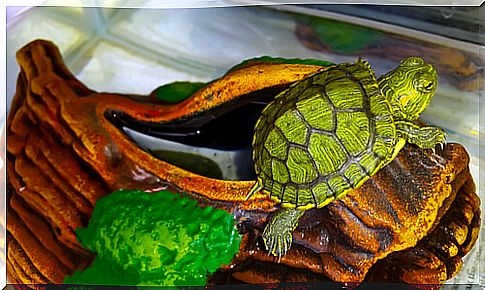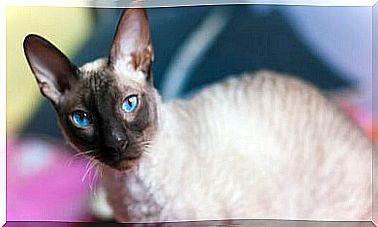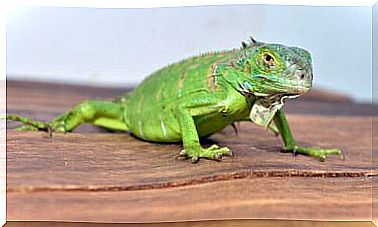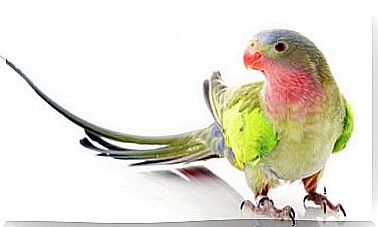Rhinitis In Turtles And Its Treatment

Chelonians are quite sensitive when it comes to their airways. Therefore, rhinitis is common in turtles, especially water. In this article we will tell you everything you need to know about the pathology and its treatment.
Rhinitis in turtles: what to know
Rhinitis is an inflammation of the upper respiratory tract, which is manifested by an abundant mucous discharge in the nostrils, as well as noise when breathing and loss of appetite. In addition, they may present mucous bubbles from the nose, weakness and palate with white spots.
Another symptom of this pathology is that sea turtles float sideways, as if they lost their balance. This is because one of the two lungs is not getting enough oxygen and is not expanding properly.
Generally, the turtles most affected by rhinitis are those belonging to the Testudo genus : Graeca, Hermanni, Icata, Pardalis, Marginata, Leprosa, Chilensis, Horsfieldii and Emys.
The bad thing about rhinitis in turtles is that it is contagious and we must be careful if there is more than one specimen in the fish tank. The chelonium’s immune system must be in excellent condition to cope with the entry of viruses and bacteria.

Why does rhinitis occur in turtles?
The causes of rhinitis in turtles are varied, including diet, environment, bacteria, a weak immune system, or viruses. Even in many specimens it is a consequence of herpesvirus, a very common disease in chelonians. It can also stem from pneumonia, stomatitis, or septicemia.
The excessive production of mucous membranes in turtles can be due to the introduction of herbs and other elements into the respiratory orifices, as well as infections caused by microorganisms that are present in the water. Other factors that trigger rhinitis are:
- Changes in temperature (weaken defenses).
- Overcrowding (overcrowded fish tanks).
- Stress (due to fish tank changes, moving, presence of other animals, overcrowding).
- Humidity (in the case of tortoises that are in contact with humid or wet places).
- Environmental contamination (lack of cleanliness in the fish tank or shelter, which increases the presence of fungi and bacteria).
- Different species that share a habitat (a harmless germ for one genus can be deadly for another).
Treatment of rhinitis in turtles
It is very important to take our pets to the vet to perform routine examinations and rule out diseases or pathologies. In the event that we detect something that seems abnormal to us, we should not wait for the situation to get worse and become chronic.
In the case of rhinitis in turtles it is important to know that at first you may not have symptoms and, even then, spread germs and pathogens to others. If the problem is not treated properly, it can lead to acute or chronic pneumonia.
Within the treatment for rhinitis we can find different options. The veterinarian will carry out a culture of the mucus to analyze and know what bacteria or virus it is. Based on this, it will indicate the application of mucolytics or fluidifiers by oral or injectable route. He can also prescribe antibiotics, nasal washes and disinfections of the oral cavity.

In any case, even if she is inattentive, we must do what we can to keep her hydrated and fed. Choose those foods that you like the most and keep them close to your mouth.
Finally, some doctors may also advise the use of an inhaler, which is made with an aquarium air pump, a container with the liquid to be inhaled, and an outlet tube. The idea is that the turtle is in a small place and that the container with the medicine is below it (screens are usually placed in the fish tank).









